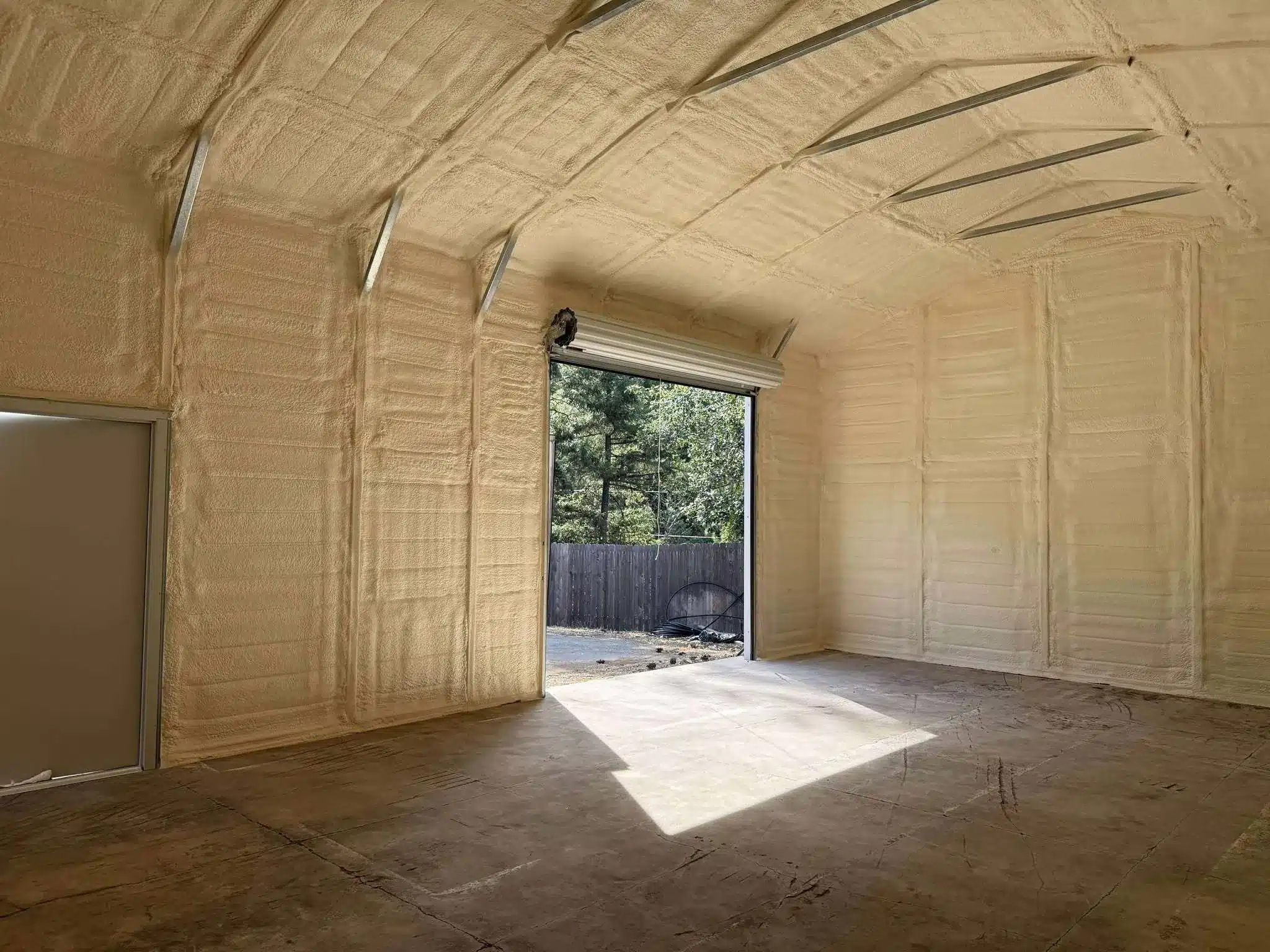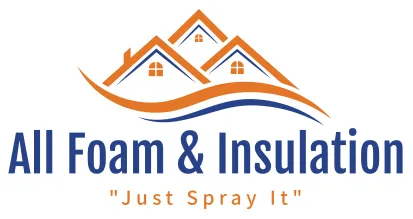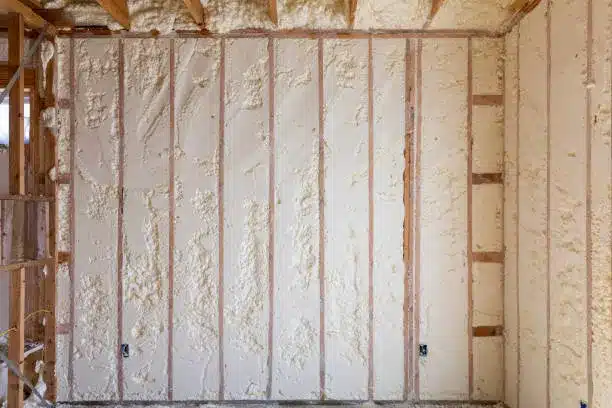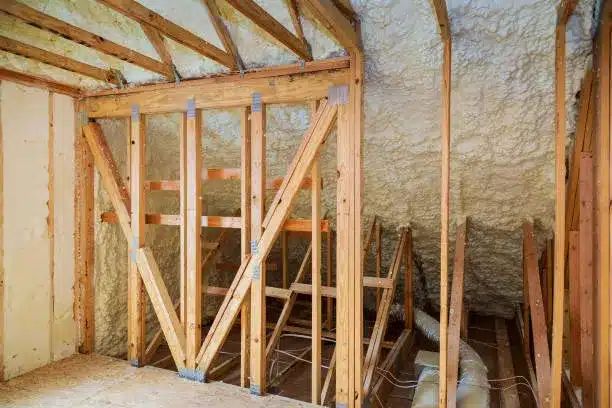Spray foam insulation holds up effectively under Medford’s intense summer temperatures, which frequently exceed 100°F. Closed-cell spray foam, in particular, performs well in high heat by forming an air-sealed thermal barrier that resists heat transfer. Its ability to reduce radiant heat gain through walls, roofs, and attics makes it suitable for the climate.
This article explains how spray foam responds to high heat exposure, breaks down key differences in types of insulation available, and presents practical factors to consider before making an insulation decision in a high-temperature zone. The information is based on installation experience in Northern California’s climate.
How Spray Foam Performs in Medford’s Climate
Medford’s dry, high-temperature summers create unique insulation challenges. Buildings exposed to extended sun hours require materials that both insulate and resist moisture buildup. Spray foam meets these requirements more reliably than many traditional methods.
Thermal Performance in High Heat
Closed-cell spray foam achieves R-values ranging from R-6 to R-7 per inch, providing superior resistance to heat transfer. Open-cell spray foam, while less dense, offers adequate insulation for interior applications but is not ideal for direct sun-facing exterior use in hot climates.
Air Sealing and Energy Efficiency
Poor air sealing in high-heat regions can lead to excessive HVAC cycling and energy waste. Spray foam’s expansion during application closes off cracks, seams, and cavities, improving air control and reducing strain on cooling systems.
Bonus Tip:
Homes with existing ductwork in unconditioned attics benefit significantly from closed-cell spray foam, as it reduces conductive and radiant heat impact directly on duct surfaces.
Performance Comparison of Insulation Options in High Heat
| Insulation Type | R-Value (per inch) | Moisture Resistance | Air Sealing Capability | Suitability for Medford Heat |
|---|---|---|---|---|
| Closed-Cell Spray Foam | 6.5 – 7.0 | High | High | Excellent |
| Open-Cell Spray Foam | 3.5 – 4.0 | Moderate | High | Moderate (Interior Only) |
| Fiberglass Batts | 2.9 – 3.8 | Low | Low | Poor |
| Blown-In Insulation | 2.2 – 4.0 | Low to Moderate | Low to Moderate | Moderate |
Source:
- U.S. Department of Energy (DOE)
- Building Science Corporation (BSC) Reports on Climate Zones 2B and 3B
Technical Performance Metrics for Spray Foam in High Heat
| Specification | Closed-Cell Spray Foam | Open-Cell Spray Foam |
|---|---|---|
| R-Value | 6.5 – 7.0 per inch | 3.5 – 4.0 per inch |
| Permeability | <1.0 perm | 10+ perms |
| Density | 2.0 lbs/ft³ | 0.5 lbs/ft³ |
| Expansion Rate | <10x original volume | 100x original volume |
| Structural Reinforcement | Yes | No |
Bonus Tip:
Closed-cell spray foam adds rigidity to roof decking, helping to resist sagging and structural deformation during heatwaves.

Consider These Factors Before Choosing Insulation
- Roof Exposure: South-facing and west-facing surfaces absorb more direct heat. Closed-cell foam performs better here due to higher thermal resistance.
- Ventilation Needs: Sealed attics require mechanical ventilation planning. Avoid trapping moisture.
- Budget vs. Performance: Fiberglass may cost less upfront but often underperforms in extreme heat. Spray foam provides better lifecycle efficiency.
- Fire Codes and Retrofitting: Medford’s building codes require ignition barriers over spray foam in attic installs. Retrofit applications may require removal of existing material.
- Space Constraints: Closed-cell foam suits narrow wall cavities due to high R-value per inch.
Service Options That Solve Heat Retention Challenges
All Foam & Insulation, LLC installs high-performance materials designed for Medford’s thermal stress:
- Closed-Cell Spray Foam: Seals air gaps, insulates, and supports structural integrity in rooflines.
- Open-Cell Spray Foam: Good for interior walls and sound-dampening between floors.
- Blown-In Insulation: Flexible coverage in attic retrofits where existing batts underperform.
- Fiberglass Batt Insulation: Still used in some wall assemblies where space permits and spray foam isn’t feasible.
Common Questions About Spray Foam in High-Heat Climates
Does spray foam insulation really hold up in Medford’s extreme summer heat?
Yes, closed-cell spray foam performs exceptionally well, maintaining its structure and insulating power even when temperatures exceed 100°F.
Is open-cell spray foam a good option for exterior walls in hot climates?
Not typically. Open-cell foam is better suited for interior use because it’s less dense and not ideal for sun-facing exterior surfaces.
How does spray foam compare to fiberglass during a heatwave?
Spray foam offers far better thermal resistance and air sealing, which reduces energy use and keeps homes cooler — something fiberglass often fails to do under intense heat.
Summary of Key Insights
Spray foam, especially the closed-cell variety, holds up under Medford’s extreme summer heat by resisting thermal transfer, sealing air leaks, and adding structural rigidity. It outperforms traditional fiberglass or blown-in insulation in both efficiency and durability. Choosing the right type depends on placement, exposure level, and performance goals.
Get Expert Help for Hot Climate Insulation
Contact All Foam & Insulation, LLC to discuss the best insulation strategy for your building in high-heat zones. For more technical guidance or a materials consultation:
Phone: (541) 826-9600
Email: [email protected]
Frequently Asked Questions
Does spray foam melt or degrade in Medford’s high heat?
No. When properly installed, both closed-cell and open-cell spray foam remain stable at temperatures well above Medford’s summer peaks. They do not melt or shrink under typical conditions.
Is spray foam better than fiberglass for attics in this area?
Yes. Spray foam reduces both radiant and conductive heat better than fiberglass, especially in unvented attics or where HVAC ducts run overhead.
Can existing insulation be removed and replaced with spray foam?
Yes. Removal is often recommended for full performance. Proper substrate prep ensures adherence and air sealing.
What about roof moisture concerns in hot climates?
Closed-cell foam has low permeability and limits moisture movement. In Medford’s dry conditions, it also prevents condensation issues caused by day-night temperature swings.





